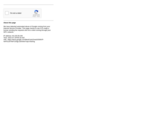
Birthday Pie - Grade 4
- Subject:
- Mathematics
- Material Type:
- Lesson Plan
- Date Added:
- 07/18/2022

Birthday Pie - Grade 4
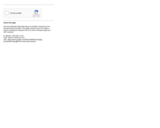
Fence Area - Grade 4

Food Science - Grade 4

Missing Number - Grade 4

Tiedye - Grade 4

Wheels - Grade 4

Los estudiantes leen un articulo, miran un video y toman notas de estos dos recursos de los que aprenden sobre contaminación del agua pluvial y como prevenirla. También aprenden la frase "que no baje agua sucia al drenaje" y escriben un ensayo para informar a otros estudiantes sobre la importancia del agua limpia para tener peces sanos.

Los estudiantes leen un articulo, miran un video y exploran una guía de campo de bolsillo y luego responden tres preguntas de investigación. Después, conducen un inventario biológico (bioblitz) y escriben un ensayo explicando lo que es un inventario biolgico o bioblitz.

Diseñado para proveer informacion básica sobre energía renovable incluyendo qué es, cómo funciona y las ventajas y desventajas para el ambiente. Cada tarea de desempeño enfoca en un tipo de energía renovable, incluyendo información básica y con suficiente información para escribir ensayos de persuasión. La tarea de energía renovable y no renovable culmina con un discurso. Los maestros cuentan con una rúbrica para calificar el discurso como pracita del SBAC. Se proporciona una plantilla para preparar los discursos.
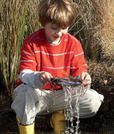
Designed to provide basic background knowledge about renewable energy including what it is, how it works and the advantages and disadvantages for the environment. Each task focuses on a type of renewable energy, including basic background knowledge, career information, and a variety of print and video resources. Students practice the research skills of locating information, selecting the best information and having enough information to explain or persuade. Renewable and Non-renewable Energy, culminates in a speech. Teachers are provided with the SBAC Speech rubric for scoring the student presentations. A template is provided for planning speeches.
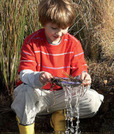
Students are asked to explain these benefits to a family from out of [WA] state that has just inherited 500 acres of forestland and are unsure about its value. Students use information from the article, the poster, and the video to answer three research questions and to write an essay, explaining the many benefits of a forest. Includes teacher directions and scoring notes.

The purpose of this task is to give students the opportunity to use mathematics in real-world applications. In this task, students are introduced to the ongoing problem of affordable housing faced by state and national community builders and city planners. Students are presented with two data tables illustrating cost of housing and wage increases over 20 years. Students discuss questions they can ask and answer using this data. They will calculate the cost increase of housing over time and compare it to wage increase, concluding with a discussion about the comparison. Includes slides to support the implementation of "Housing Our Community (Grades 3-5)" Math Performance Task with charts, images, etc.
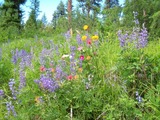
The purpose of this Performance task is to provide students with an opportunity to problem solve based on a real-world situation (Claims 2 & 4). Due to the nature of the task, there are a variety of mathematical approaches students can take to successfully complete the task, however the mathematical approach presented in Act Three of the task addresses CCSS Domain of Operation and Algebraic Thinking. With this approach, students are shown different strategies for using multiplication to find the solution. Includes slides to support the implementation of “The Winner Is…Native Plants (3-5)” Math Performance Task with charts, images, etc.
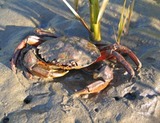
The purpose of this 3 ACT task is to provide students with an opportunity to problem solve based on a real-world situation. In the task, students are presented with 2 facts related to European Green Crabs and asked to generate their own questions that could be answered using one or both facts. Students then decide on necessary resources for finding the solution and are given time as a group to complete their work. The task concludes by having students examine the information provided in Act III to see if it answers their question. Includes slides to support the implementation of "What's the Problem (3-5)" Math Performance Task with charts, images, etc.
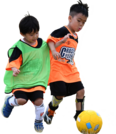
This unit is presented as a series of progressive tasks. Each learning task can be used to reach one or more of the applicable outcomes and may be taught as one lesson or part of a lesson. Teachers are encouraged to select learning tasks that best fit their teaching style and students’ needs. Modifications, accommodations, and extensions specific to your learners are strongly recommended. The suggested assessments are designed to give teachers ideas related to each task.Prior to the learning tasks, the standards, applicable exit outcomes, focus and subfocus skills/concepts, and critical skill elements are listed within the overview.Cover image: "Soccer" by monica_aulich from Pixabay.com AttributesGraham, G., Holt/Hale, S. A., & Parker, M. (2013). Children moving: A reflective approach to teaching physical education. 9th ed. New York: McGraw-Hill.SHAPE America Standards and Grade-Level Outcomes
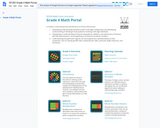
This resource is the grade 4 common math curriculum for the San Francisco Unified School District.
In Grade 4, instructional time should focus on three critical areas: (1) developing understanding and fluency with multi-digit multiplication and developing understanding of dividing to find quotients involving multi-digit dividends; (2) developing an understanding of fraction equivalence, addition, and subtraction of fractions with like denominators, and multiplication of fractions by whole numbers; (3) understanding that geometric figures can be analyzed and classified based on their properties, such as having parallel sides, perpendicular sides, particular angle measures, and symmetry.
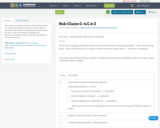
This resource requires students to present the solution to a multi-step problem in the form of valid chains of reasoning, using symbols appropriately. Students must use their content knowledge of addition and subtraction of mixed numbers with like denominators to reason and solve.